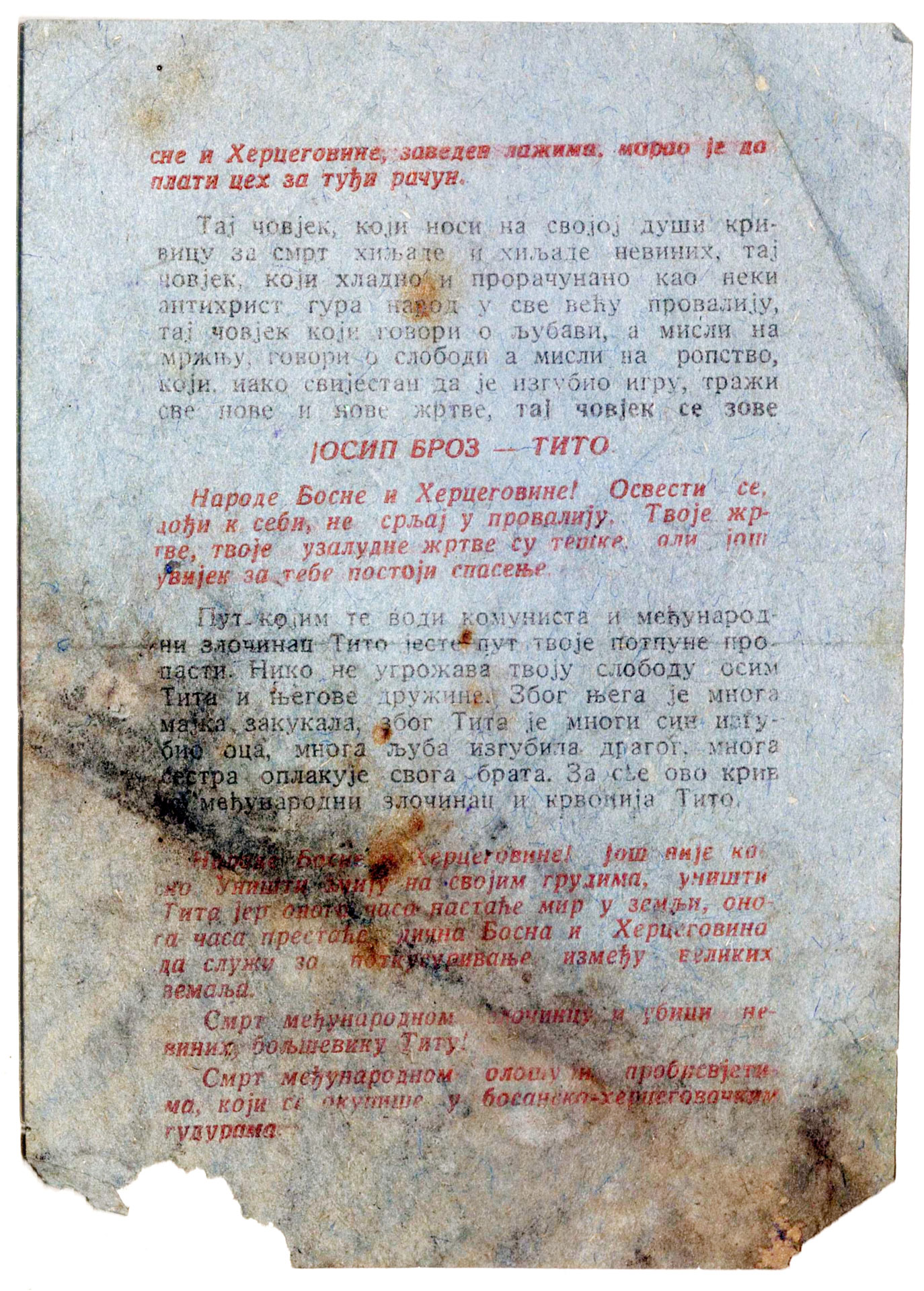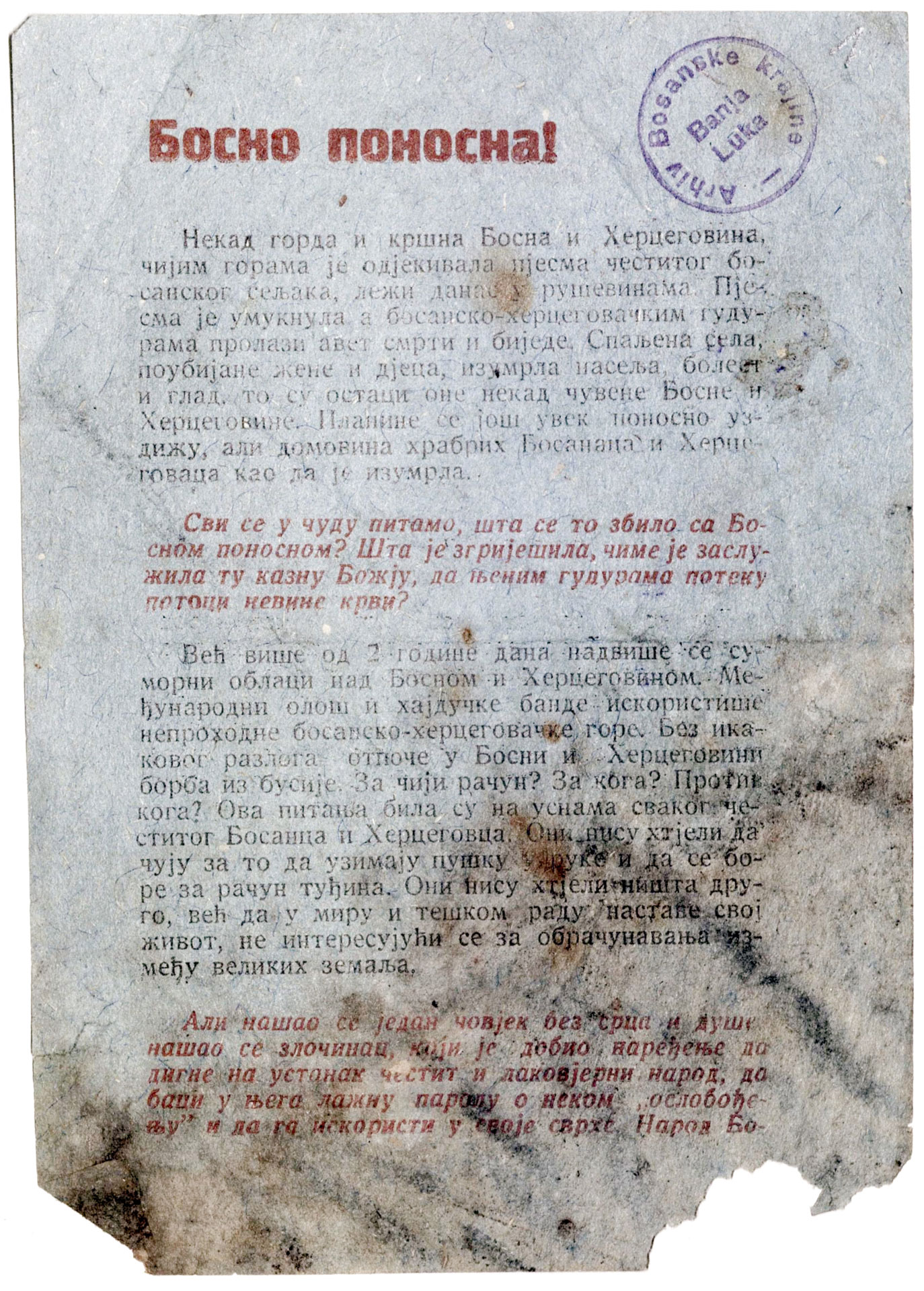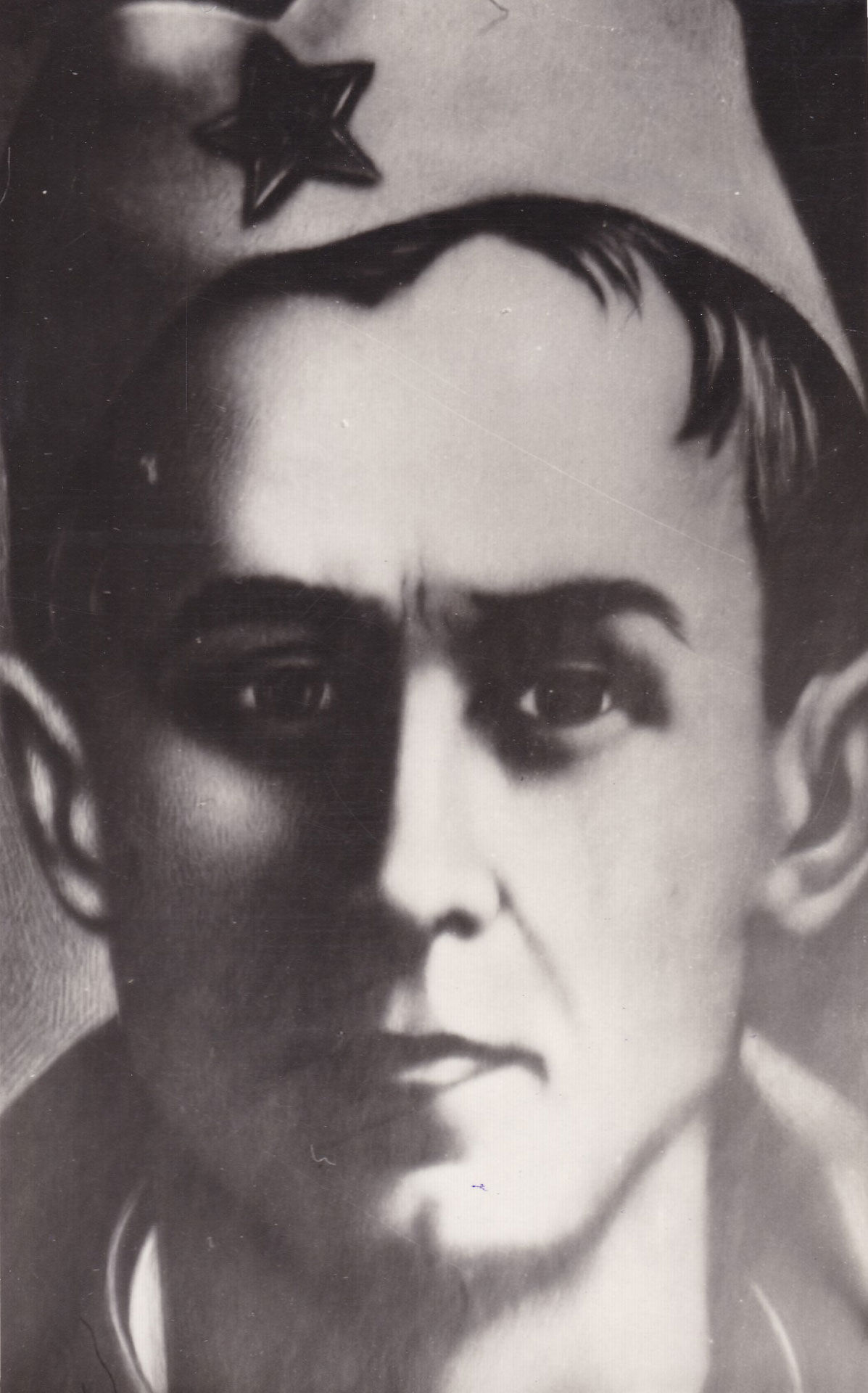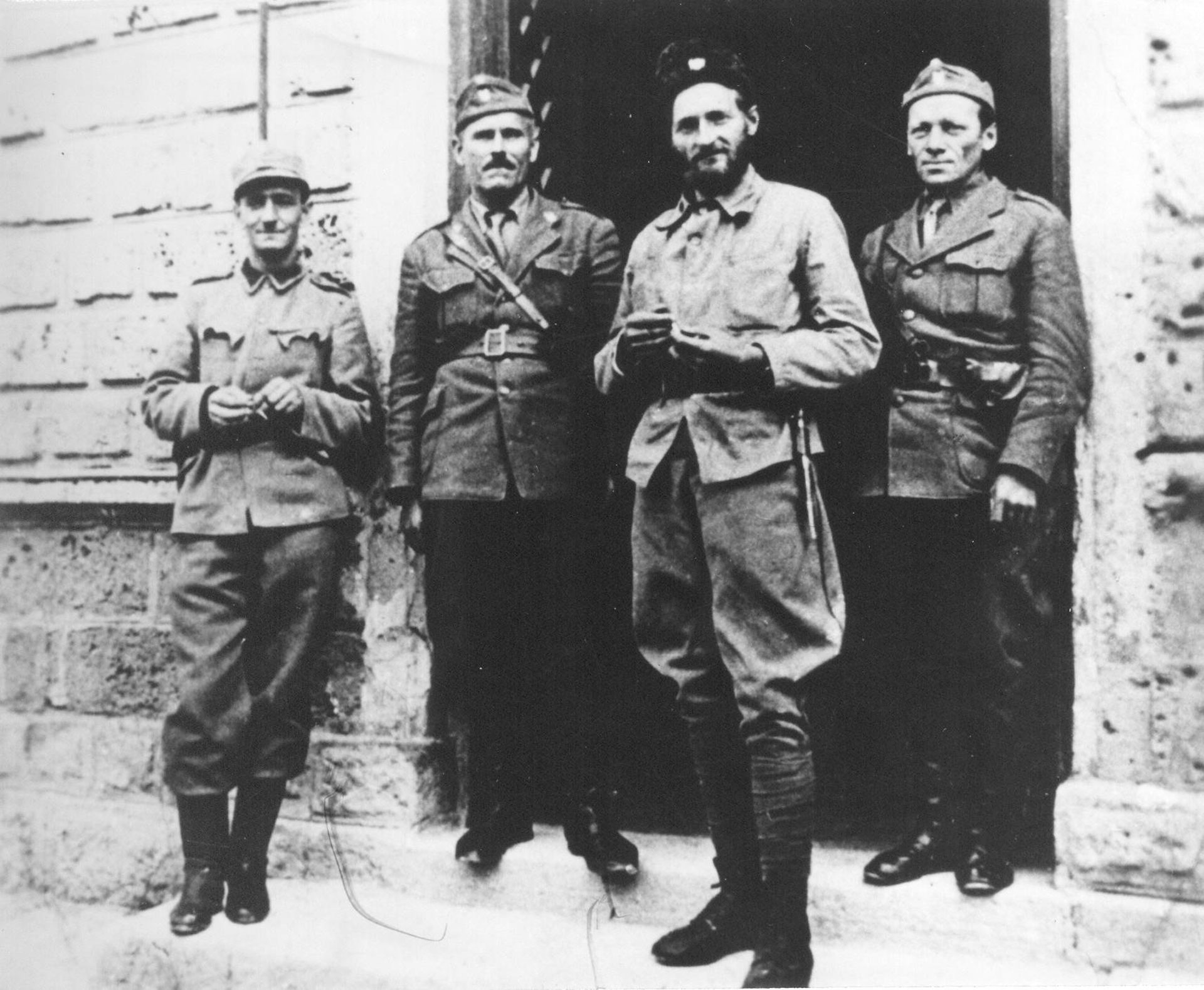“Drenović has betrayed Šolaja”: The Partisans vs. the “Chetniks”
On the morning of 27 February 1942, a group of Partisan couriers came down to the picturesque canyon of the River Vrbas, where they found the recently formed regional Partisan headquarters. It was still in session. “Drenović has betrayed Šolaja”, the couriers told everyone, causing deep consternation and a sense of alarm.
Who were these two men? Uroš Drenović was a teacher from the village of Sitnica (south of Banja Luka). Simo Šolaja was a forestry worker from the village of Pljeva, further southward. In 1941 they were both avid organisers of the uprising against the Ustasha in their respective countryside. The former commanded the “Kočić” Battalion (named after the writer Petar Kočić), while the latter was the head of the “Iskra” (Spark) Battalion. Both of these battalions formally joined the same Partisan Detachment, organised by the communists in their attempt to coordinate – but also to lead – the massive uprising in the area.
Šolaja was a member of the “Association of Chetniks”, a prewar Serb nationalist paramilitary organisation. He wore their insignia, the double–headed eagle, even after many of the combatants of his battalion who came under communist influence accepted the red pentagram. But while Šolaja remained loyal to the united front against the occupying forces, Drenović promulgated his battalion into a “Chetnik” one, and then separated it from the Partisan command.
From the outbreak of resistance the “Chetnik” denomination was appropriated by practically all Serb guerrilla groups formally loyal to the Yugoslav royal government in exile. Two major centres came about: one in western Serbia around colonel Dragoljub Mihailović (soon the nominal leader of all “Chetniks”), and another in Dalmatia around Momčilo Đujić. But as their rivalry with the communists grew into open hostility, they seeked support from the Axis. The Germans refused to work with Mihailović directly – limiting their contacts to “legalised” units – but the Italians quickly adopted the entire movement as allies against the Partisans.
Drenović was quickly approached by various emissaries. In February 1942, during a planned attack on the Axis–held town of Mrkonjić Grad in which he was supposed to take active part, he let the Italians through to outflank the Partisans. Šolaja barely made it out alive. When he retreated to his base, Šolaja tore off the eagle from his cap and had a red star sown in. The communists were relieved with Šolaja’s final alignment, but their dramatic struggle with the “Chetniks” was only beginning.
Vladan Vukliš





